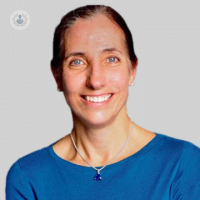Laser resurfacing
Miss Caroline Payne - Plastic surgery
Created on: 04-07-2020
Updated on: 10-20-2023
Edited by: Conor Lynch
What is laser resurfacing?
Laser skin resurfacing is a skincare procedure that improves the texture and appearance of the skin. The laser stimulates collagen production by directing beams of light at areas of blemishes and irregularities such as wrinkles, acne scars and more. A topical anaesthetic is applied to the face to lessen the pain.
There are two types:
- Ablative lasers: This is the more aggressive group of lasers that remove outer layers of skin. Depending on the type of skin and the blemish, only one session may be needed.
- Non-ablative lasers: The beams of light pass through the skin’s outer layers without removing them. In some cases, more sessions are necessary to achieve the desired results. The results are long-lasting, however.
Your plastic surgeon or dermatologist will advise you on the most suitable type for you based on your skin type, tone and the blemish being targeted.

Why is it done?
Laser resurfacing treats irregularities and blemishes such as the following:
- Scars
- Fine lines and deep wrinkles
- Warts
- Crow’s feet
- Uneven skin tones
- Age spots
What does laser resurfacing involve?
The laser is directed at the outer layer of skin. Underneath the outer layers, the lower layers are heated up and this stimulates the production of collagen. The result is tightened and refreshed skin with improved or removed blemishes.
How do you prepare for laser resurfacing?
Laser resurfacing requires a week’s worth of preparation to improve the skin’s tolerance to the lasers and reduce the likelihood of side effects. Some medication (including acne medication) and existing conditions can affect the skin’s ability to heal correctly and these must be made known to your specialist.
What does recovery from laser resurfacing involve?
After having the procedure, there is no need to stay at the clinic. However, much of the healing takes place over the following weeks. The length of time needed for recovery depends on the previous condition of the skin and how large the area of skin being targeted was. Your specialist will advise you on how to keep the skin clean and moisturised as well as advise you on the level of peeling you can expect.
Skin remains sensitive for up to a year after the treatment, and so the use of a high SPF sun cream is recommended.
